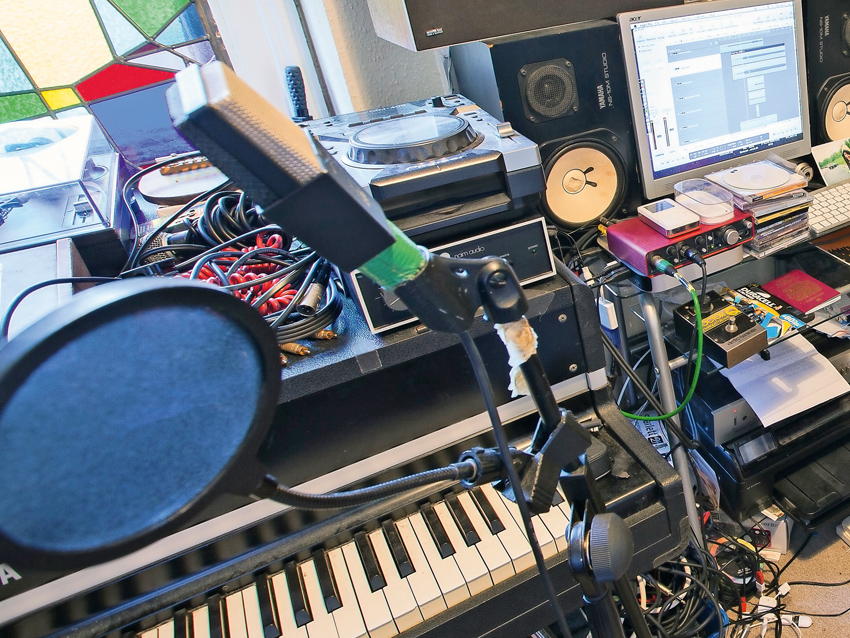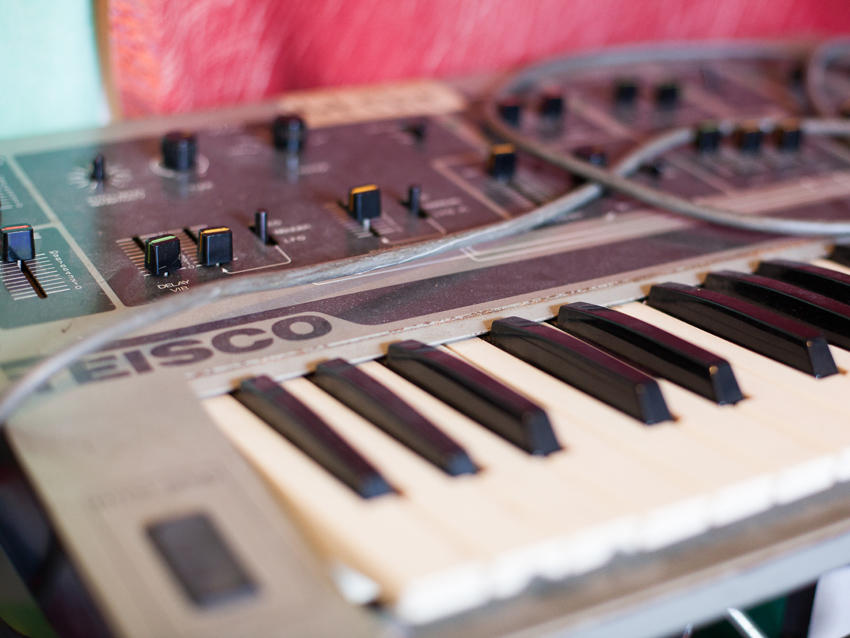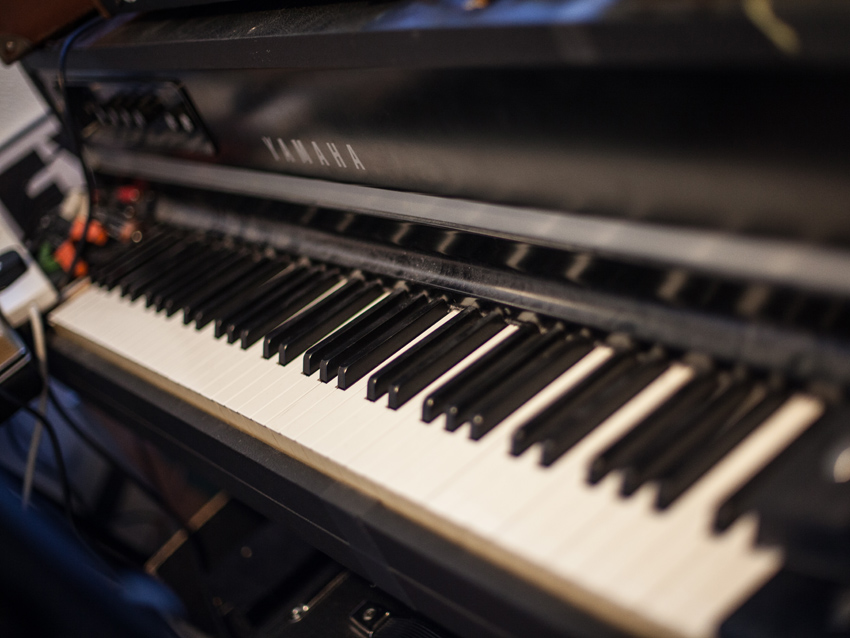In pictures: Alexis Taylor's home studio
The Hot Chip man shows you where he created his new solo album

Awaiting Alexis
Alexis Taylor’s transcendent vocals will be a familiar pleasure if you’ve been a follower of Hot Chip’s musical output over the past few years. Along with their instinctive gift for knocking out floor-filling electronic gems, Hot Chip’s various members (Taylor included) appear to have a work ethos that would shame some ant colonies, with numerous extra-curricular musical activities supplementing their not inconsiderable collective 'main band' and DJing commitments.
A case in point is Await Barbarians, the beautiful new solo album from Taylor, on which he plays everything you hear within its grooves bar some strings. Think of the more laidback, reflective Hot Chip moments as a jumping off point and that’s close to the organic, downtempo flavours served up by Taylor on this, his second solo outing.
Recorded entirely in his North London home studio, Taylor has eschewed frantic club beats for an altogether more late night sound, with ancient drum boxes underpinning analogue pads, delicate guitars and that trademark voice.
Await Barbarians is a triumph of electronic subtleties and good old-fashioned songwriting, which is why Future Music were delighted to visit Alexis at his North London HQ and spend an enjoyable afternoon chatting to him about the gear he used to fashion this new album.
You can read the full interview in Future Music 285, which is on sale now.
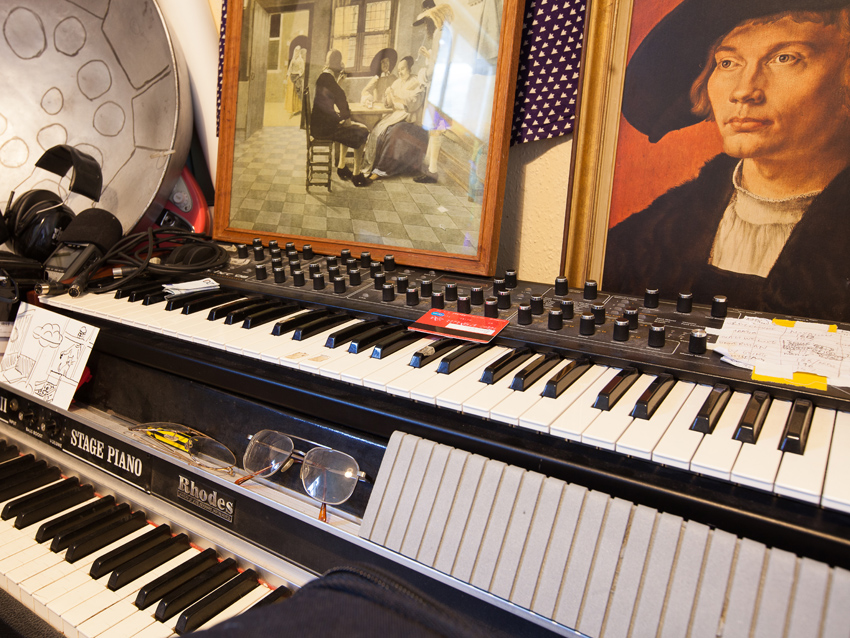
Dave Smith Instruments Prophet 08
“The Prophet 08 synth is all over the record. I’ve had it for a few years, but I’ve been getting to know it better. I’ve used it with Hot Chip, but probably most with About Group and on my solo stuff.
“There are certain sounds within that synth, presets and patches I’ve created, that always start me off with an idea. I also bought a Dave Smith Tetra, which is a four-voice module, which I’ve been using a lot live as well as on this record.”
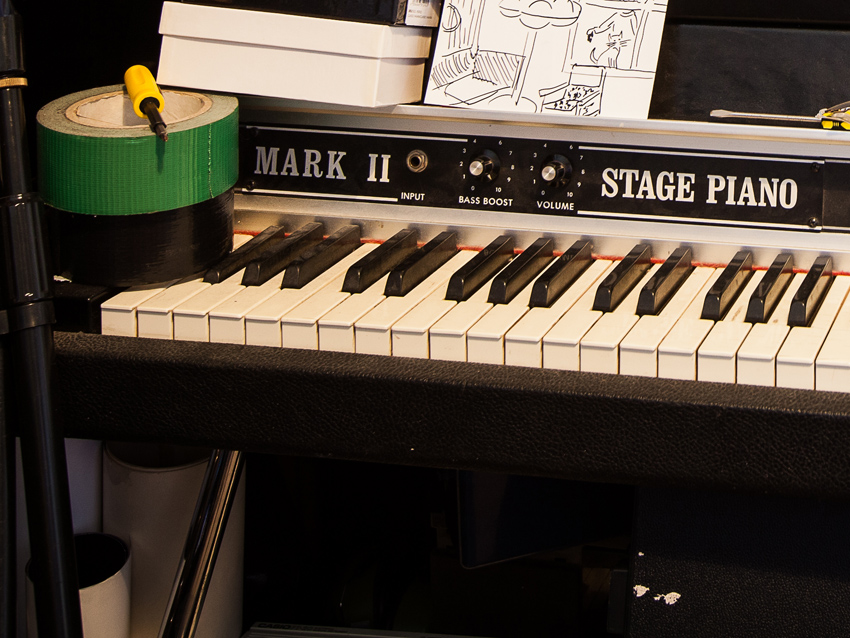
Fender Rhodes
“The Fender Rhodes has been all over everything I’ve done, but I put it on one track on the album and ended up taking it out as it felt like I needed a different palette of sounds. Fender Rhodes' and Wurlitzers are these very attractive, warm sounds which I’ve used a hell of a lot, but I wanted to end up with a different pool of sounds on this album.”
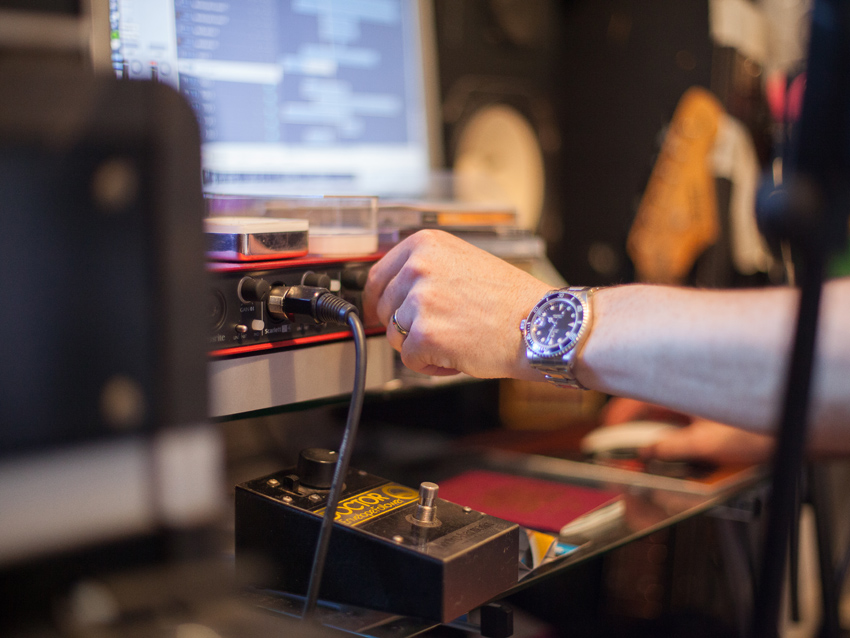
Focusrite Scarlett
“I’ve got a Focusrite interface. I used to use an old MOTU - I used that with a matched pair of AKG 414s to record the upright piano downstairs. That’s a pretty standard way to record an upright piano. So, I’ve got this Focusrite and another one with slightly more channels so I can record piano in stereo and a vocal at the same time. That was where I was up to in terms of my requirements.”
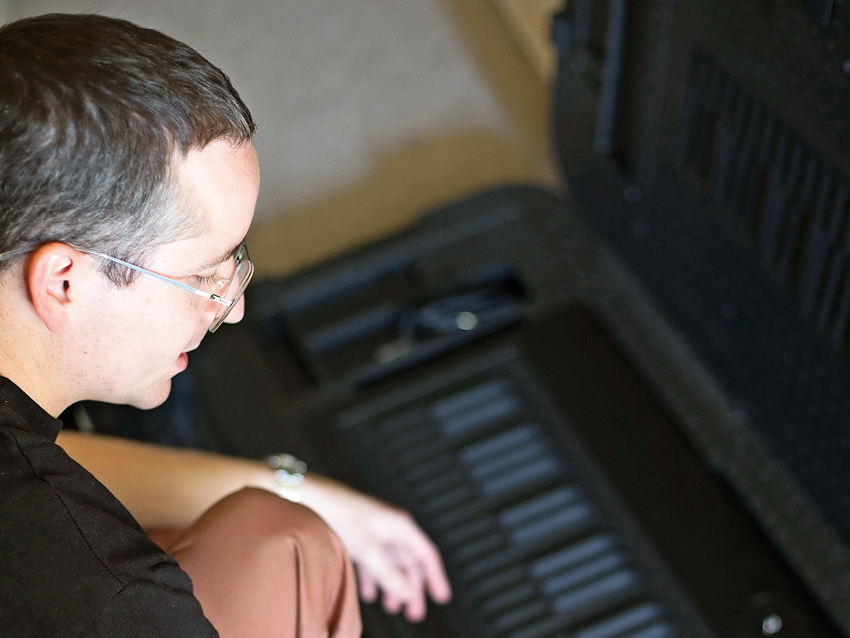
ROLI Seaboard
“It's really great as it’s like having a modulation wheel built into every key. It responds in different ways to the velocity and if you move the keys side to side. It’s capable of doing so many things I haven’t had a chance to explore yet, but I’m hoping to hook it up to my Dave Smith stuff and use those sounds with this as the controller."
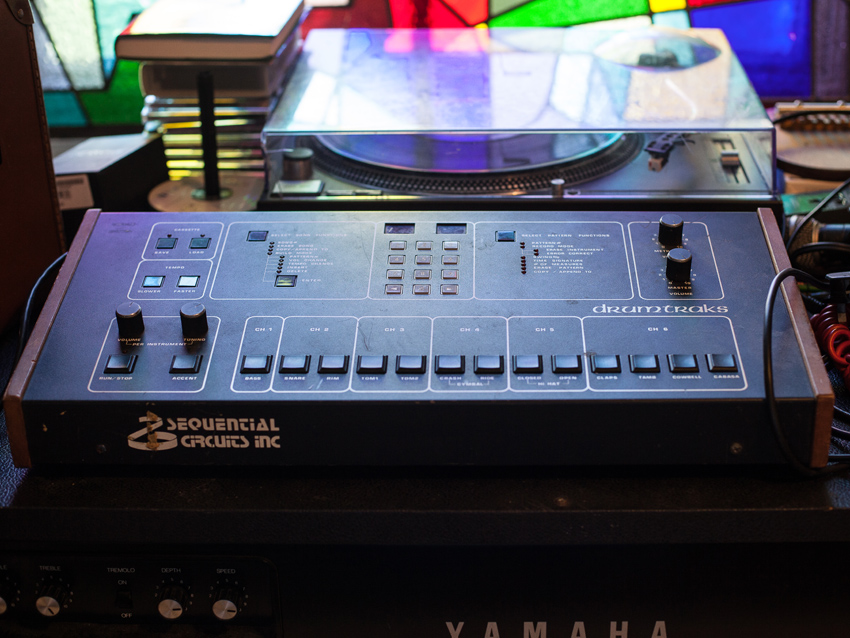
Sequential Circuits Drumtraks
“I’ve used this Sequential Circuits Drumtraks a hell of a lot. One thing I should maybe say is that, for me, the process is often making a pattern in the Drumtraks, running it through a phaser, chorus and flanger pedal, often in Logic, then using those effects in an extreme way so that there are tonal and pitched things happening to the drum machine sound. I record it all, put it on a CD then throw it into a CDJ and pitch it up or down massively, or change the key, then I play that back into Logic.
“I like doing that quite quickly. There’s a track I’ve done all that on, which hasn’t come out yet, called Drum Machines Have Got No Soul, which is based on that sticker I have up on the wall.”
Future Music is the number one magazine for today's producers. Packed with technique and technology we'll help you make great new music. All-access artist interviews, in-depth gear reviews, essential production tutorials and much more. Every marvellous monthly edition features reliable reviews of the latest and greatest hardware and software technology and techniques, unparalleled advice, in-depth interviews, sensational free samples and so much more to improve the experience and outcome of your music-making.


